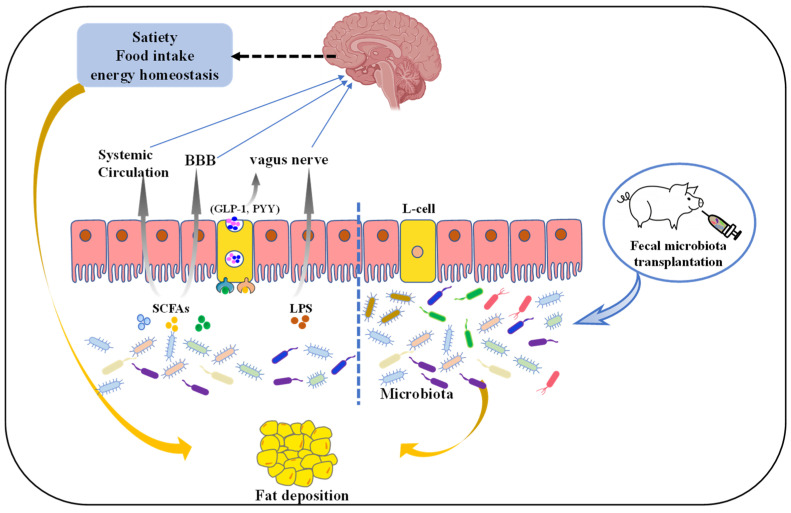Figure 1.
The mechanism of gut microbiota regulates pig fat deposition. Microbiota-derived metabolites such as SCFAs or lipopolysaccharide (LPS) affect satiety, food intake, or energy homeostasis directly via the vagus nerve (VN) or indirectly blood–brain barrier (BBB) and systemic circulation. L-cells are activated by these microbial metabolites through activation of different receptors, resulting in the production of gut hormones such as glucagon-like peptide-1 (GLP-1) and peptide YY (PYY). These intestinal hormones signal from the gut to the nucleus tractus solitarius in the brain via the VN and direct secretion into the circulatory system. Additionally, fecal microbiota transplantation (FMT), where fecal microbiota from a donor is transplanted into a recipient GI tract, has the potential to be an effective option to regulate fat deposition.

